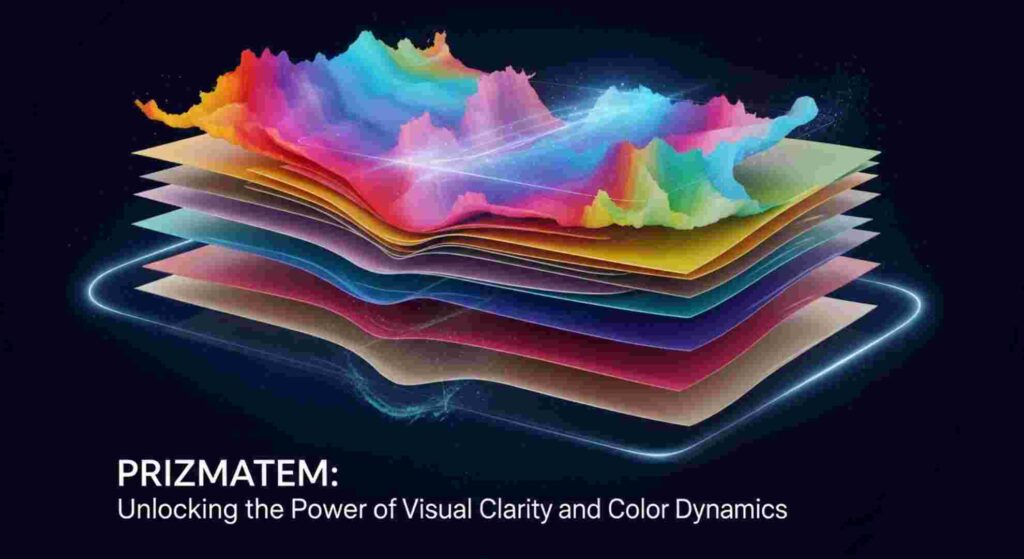In the ever-evolving world of optics and visual technology, few terms have gained as much attention recently as prizmatem. Whether you’re a scientist, a designer, or simply someone fascinated by how light interacts with objects, understanding what prizmatem really entails can open up a new perspective on the way we see and manipulate light. Today, we’ll take an in-depth journey into this fascinating concept, exploring its origins, applications, and the latest advancements in 2025.
What is Prizmatem? A Clear Explanation
At its core, prizmatem refers to the phenomenon or technology involving the use of prisms to manipulate light. The term is derived from the word “prism,” a transparent optical element with flat, polished surfaces that refract light. These devices are designed to split, bend, or redirect light beams, revealing the spectrum of colors or altering the path of light for various purposes.
In recent years, prizmatem has expanded beyond traditional optical uses, becoming a critical component in fields like telecommunications, medical imaging, and even artistic visual effects. The core principle involves the dispersion of light—how different wavelengths of light bend at different angles when passing through a prism, creating a spectrum of colors or focusing light in specific ways.
Key Takeaway:
Prizmatem isn’t just about shining light through a glass piece; it’s about harnessing the properties of light for practical, creative, and scientific purposes. It exemplifies the intersection of physics, engineering, and artistry.
The Science Behind Prizmatem: How Light Interacts with Prisms
To understand prizmatem fully, it’s essential to grasp how light behaves when it encounters a prism. When a beam of light enters a prism, it slows down and bends—a process called refraction. Different colors of light bend by different amounts because each wavelength has a unique refractive index. This separation of light into its component colors is called dispersion.
Dispersion and Spectrum Creation
Imagine shining a white flashlight through a triangular glass prism. The light emerges as a vivid spectrum ranging from deep red to violet. This iconic display illustrates the fundamental principle behind prizmatem: dispersing light to reveal its constituent colors.
In modern applications, this principle is harnessed through specialized prisms designed to optimize dispersion for specific outcomes.
How Prizmatem Enhances Optical Systems
Advancements in prizmatem technology have led to highly precise optical systems. For example, in spectrometers, prisms enable scientists to analyze the composition of substances by examining their light spectra. Similarly, in laser systems, prismatem components help direct and shape beams for cutting, medical procedures, or communication signals.
Important points to remember:
- The angle of the prism and the material used influence how light is dispersed.
- Modern prizmatem devices often incorporate multiple prisms or combine with lenses for complex light manipulation.
- Researchers are continually developing new materials to improve dispersion efficiency and minimize light loss.
Practical Applications of Prizmatem in 2025
The versatility of prizmatem has made it integral to many sectors. Here are some of the most impactful applications today:
1. Telecommunications and Data Transmission
Fiber-optic technology relies heavily on prizmatem principles to transmit data at lightning-fast speeds. Prisms are used to split and recombine signals, enabling high-capacity internet, cable TV, and secure communications.
Why it matters: As data demands grow exponentially—with 5G, IoT, and cloud computing—the role of prizmatem in ensuring reliable, high-speed transfer becomes even more critical.
2. Medical Imaging and Diagnostics
Optical devices like endoscopes and microscopes incorporate prizmatem components to improve image clarity. Dispersion control allows for better visualization of tissues and cells, aiding in early diagnosis and minimally invasive procedures.
Example: Advanced optical coherence tomography (OCT) systems use prisms to enhance resolution, allowing doctors to see detailed cross-sections of the retina.
3. Artistic and Visual Effects
Prizmatem isn’t confined to science—it also fuels creativity. Artists and designers leverage prisms to create stunning visual displays, from immersive light installations to holography.
Trend in 2025: Customized prizmatem devices produce vibrant, dynamic color effects that respond to environmental factors or user input.
4. Environmental Monitoring and Scientific Research
Scientists use prizmatem-based spectrometers to analyze atmospheric gases, monitor pollution, and study climate change impacts. By examining light absorption and dispersion, they gather critical data about Earth’s health.
Cutting-Edge Innovations in Prizmatem Technology
As of 2025, prizmatem continues to evolve, driven by breakthroughs in materials science, nanotechnology, and computational optics. Here are some exciting developments:
| Innovation | Description | Impact |
|---|---|---|
| Meta-material Prisms | Using engineered materials with unique refractive properties | More precise control over light dispersion and bending |
| Adaptive Prizmatem Systems | Incorporate sensors and AI to dynamically adjust light paths | Real-time optimization for imaging and communication |
| Miniaturized Prismatic Devices | Ultra-compact prisms for integration into smartphones and wearables | Enhanced AR/VR experiences and mobile diagnostics |
Future Prospects
Looking ahead, prizmatem is poised to revolutionize how we interact with light and information. Researchers are exploring quantum prisms that manipulate photons at the quantum level, promising breakthroughs in secure communication and computing. Moreover, sustainable manufacturing of prism materials aims to reduce environmental impact, aligning technological progress with eco-conscious goals.
Why Prizmatem Matters More Than Ever
In a world increasingly reliant on optical technologies, understanding and leveraging prizmatem can offer tangible benefits—from faster internet and better healthcare to immersive entertainment experiences. It exemplifies how fundamental physics can be harnessed for innovation, transforming everyday life.
Think about it: The colors you see in a rainbow are a natural prizmatem display. Human ingenuity has taken that basic principle and refined it into sophisticated tools that power our digital age. Recognizing this connection helps us appreciate the profound influence of light and optics in shaping our future.
FAQs About Prizmatem
Q: Is prizmatem only about prisms, or does it include other optical components?
A: While the term originates from the use of prisms, prizmatem now encompasses a broader range of optical phenomena and devices that manipulate light using prism-like principles, including advanced materials and configurations.
Q: Can prizmatem be used in everyday gadgets?
Absolutely! Many modern devices like cameras, smartphones, and augmented reality glasses incorporate prizmatem principles to enhance performance and user experience.
Q: How does prizmatem help in environmental science?
Scientists utilize prizmatem-based spectrometers to analyze atmospheric gases, monitor pollution levels, and study climate change effects by examining how light interacts with different substances.
Q: Are there any health risks associated with prizmatem devices?
Most prizmatem applications are safe, especially in consumer electronics and medical devices designed with safety standards. However, high-powered laser systems using prizmatem components should be handled with caution.
Q: What’s the biggest challenge in prizmatem development today?
One of the main hurdles is creating materials that efficiently disperse light with minimal loss and at lower costs, enabling wider adoption across industries.
Wrapping Up: The Bright Future of Prizmatem
From the simple beauty of a rainbow to cutting-edge scientific instruments, prizmatem embodies the fascinating interplay between light and matter. As technology advances, our ability to manipulate light more precisely and creatively will unlock new possibilities across industries. Whether in communication, medicine, or art, prizmatem remains a cornerstone of optical innovation in 2025—and beyond.
If you’re curious about how prizmatem might influence your field or personal projects, staying informed about the latest research and emerging tools is key. The future is bright, colored by the spectrum of endless possibilities that prizmatem offers.
Remember: Light is more than what meets the eye—it’s a gateway to discovery, creativity, and progress. Embrace the power of prizmatem, and see the world through a new spectrum.



